Buildings, especially tall buildings, when captured in photographs often appear to be leaning away from you or leaning in and looming over you. This can look disconcerting and even uncomfortable. It is certainly not a pleasing result in architectural photography. Whys does it happen though?
Buildings lean in photos because of perspective distortion. It occurs when the axis of the lens is not perpendicular to the faces of the buildings. Perspective convergence (Lean Away) occurs when the lens is tipped up and perspective divergence (Lean In) occurs when the camera lens is tipped down.
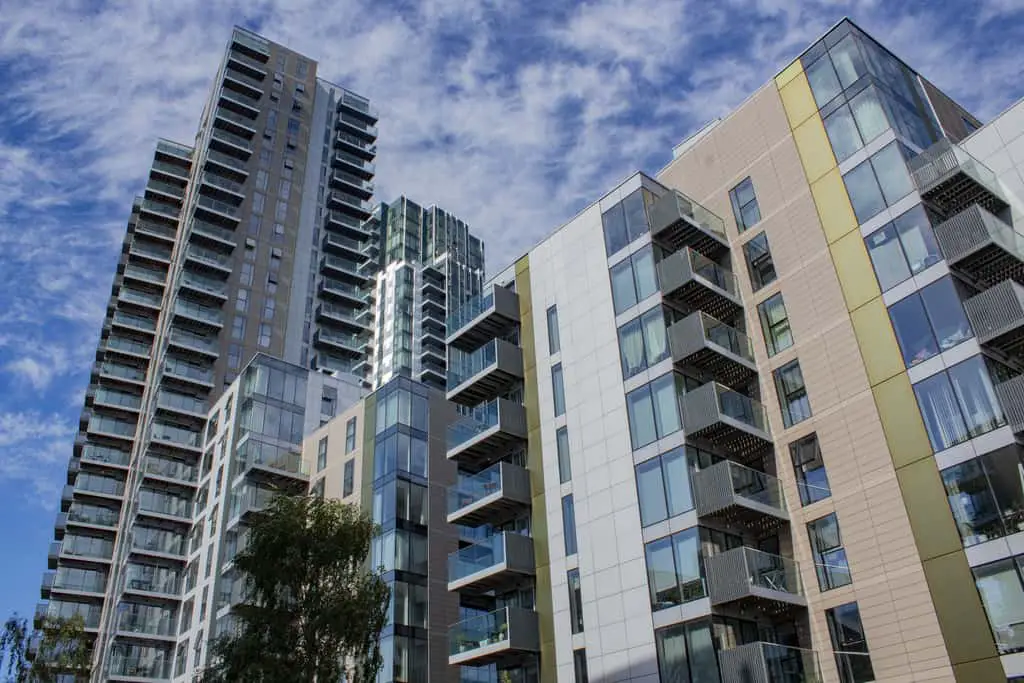
(This post may contain affiliate links which means I may receive a commission (at no extra cost to you) for purchases made through links. Learn more on my Privacy Policy page.)
This visual result is an unfortunate occurrence when attempting to photograph a tall building. The effect can be more extreme at the edge of the image and if you use a wider angle lens. There are ways to fix the problem though. The following guide explains what causes perspective distortion and how to correct it in the camera and with post-processing software.
Illustrated Guide to Perspective Distortion of Buildings And How To Correct it.
What is Perspective?
Horizontal Perspective in human vision is the appearance of objects to the eye in respect to their relative distance and positions. It’s how we perceive distance by knowing that lines are parallel but observing that they appear to be converging. To our eyes, verticals remain vertical but diminish in scale relative to their distance from us. The verticals provide an impression of depth by setting up multiple layers. Two constants that occur in Horizontal Perspective are the horizon line and the vanishing point. All the parallel horizontal lines appear to converge towards the horizon line and if they continue far enough into the scene, converge at the vanishing point.
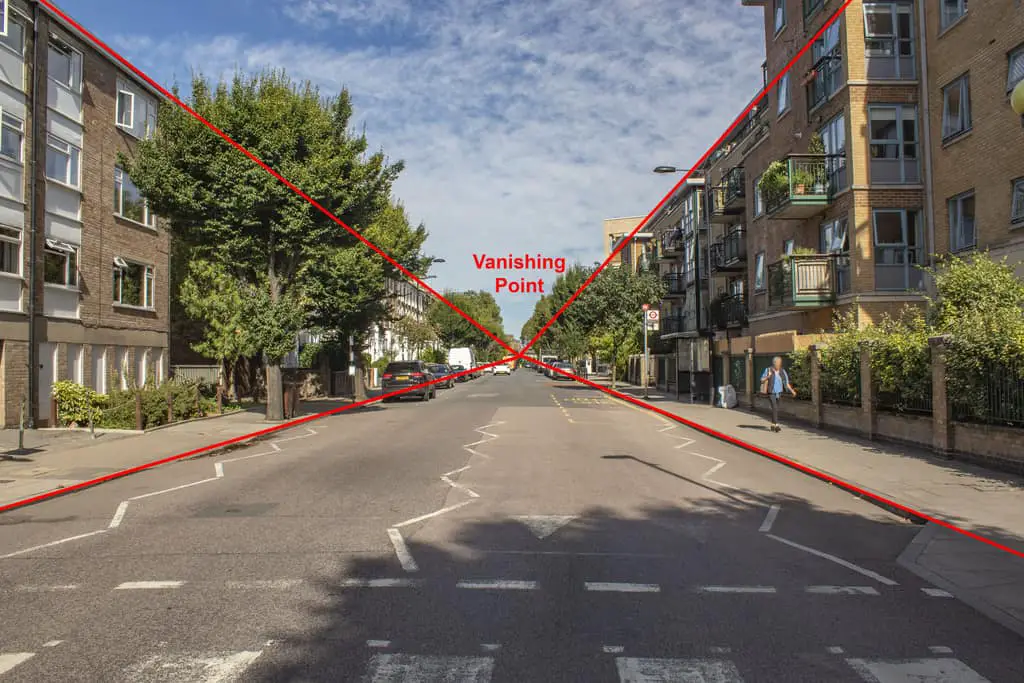
“As an Amazon Associate, I earn from qualifying purchases.”
Check out the latest Canon DSLR cameras on Amazon US here.
Check out the latest Canon DSLR cameras on Amazon UK here.
Vertical Perspective in human vision occurs when we start to look up at objects much taller than ourselves. Now, all the vertical lines that are parallel, appear to be converging towards a vanishing point. This time there is no horizon.
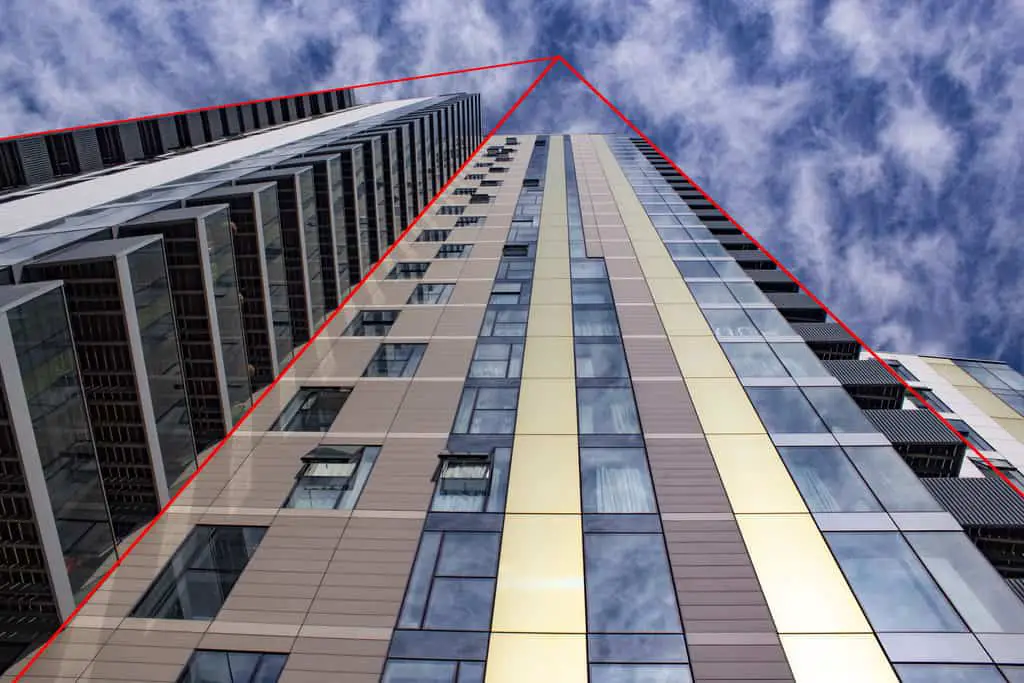
What is Perspective Distortion?
Perspective distortion of tall buildings occurs as soon as the camera is tilted off an axis that is perpendicular to the faces of the building you are trying to photograph. Imagine an axis passing out through the centre of the lens towards the building. It will also be perpendicular to the cameras sensor plane. While the axis is perpendicular to the face of the building all of it is the same distance from the sensor and therefore the building will appear perfectly vertical through the viewfinder.
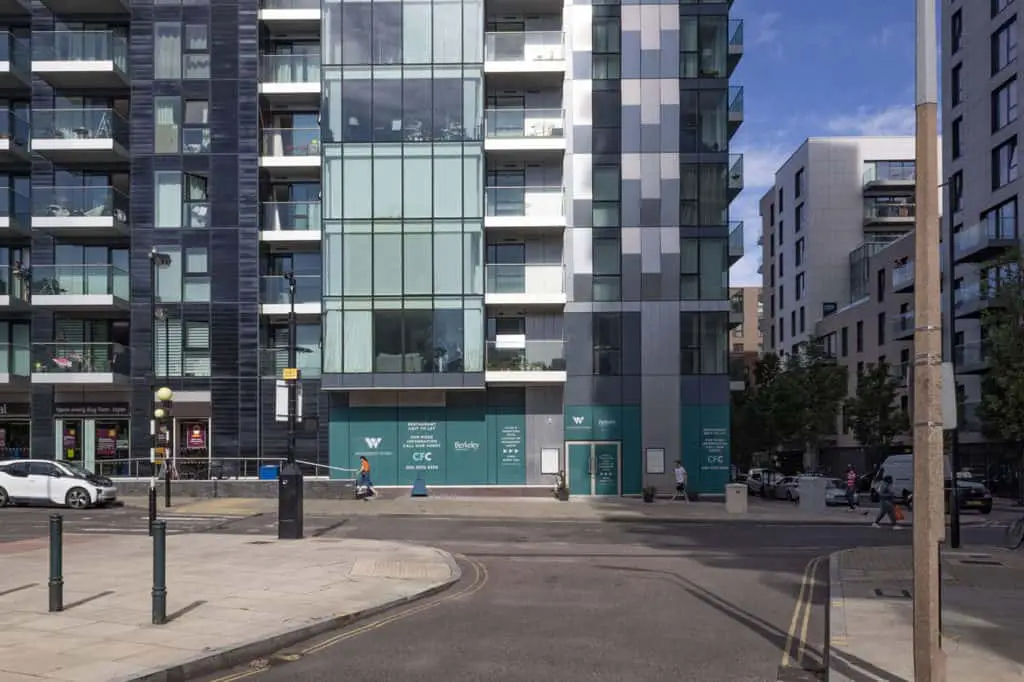
Photo by Oscar J Harper
The problem is you won’t see much of the building if you are too close. If you start to tilt the camera upwards to see more of it through the viewfinder the lens axis is no longer perpendicular to the face of the building. The upper part of the building is now further away from the camera than the lower part of the building. The perspective effect is starting to happen as the parallel lines start to converge towards a vanishing point, just as occurs in horizontal perspective.
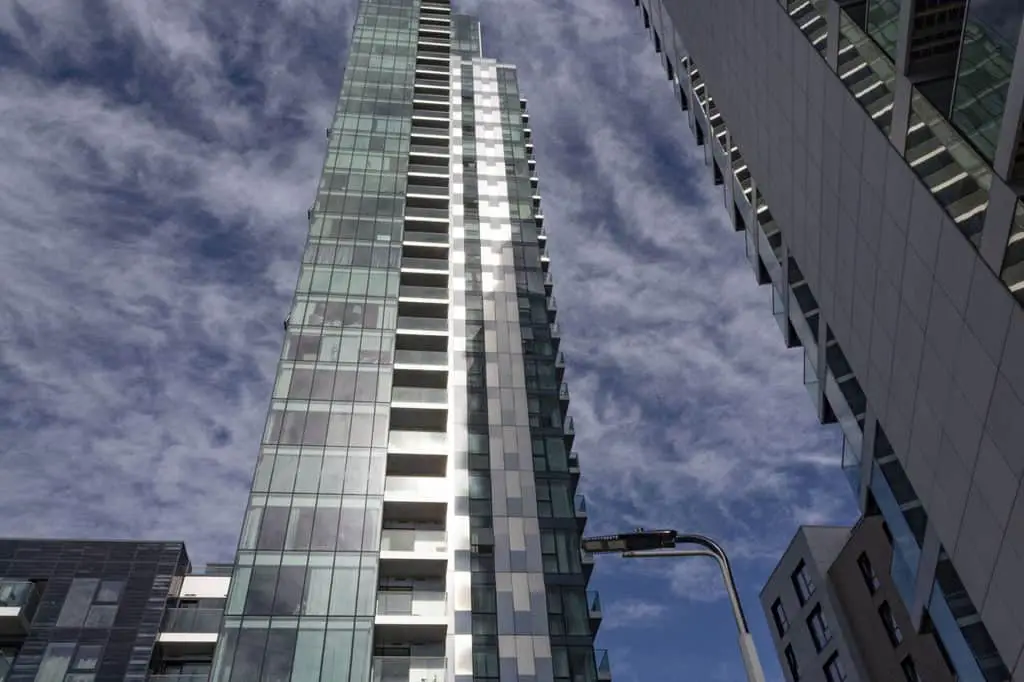
This convergence is an unwanted side effect in architectural photography as the building takes on a distinct “lean” which was never the Architects intention. There are several ways to correct this convergence distortion and keep the verticals looking vertical. Three methods are detailed below.
How do You Correct Perspective Distortion With a Standard Lens?
You can’t really correct the perspective convergence with a standard lens but you can get yourself into a better position to eradicate the effect. You need to get higher up so that you can see more of the upper part of the building whilst maintaining a lens axis that is perpendicular to the face of it. This way, when you observe the building through the lens, all the verticals will remain vertical.
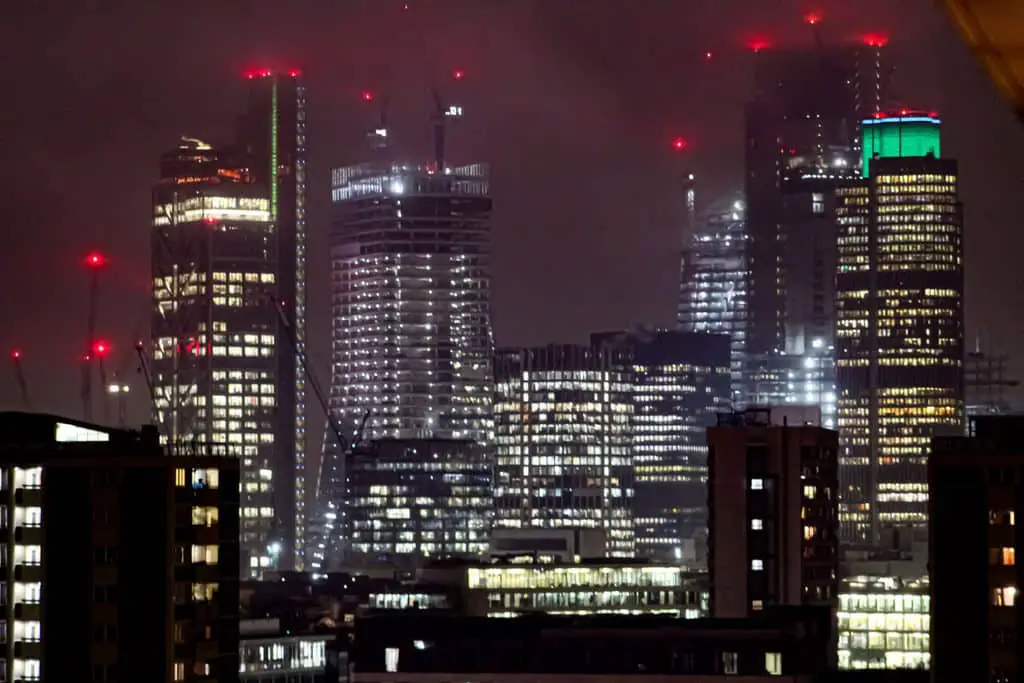
Photo by Oscar J Harper
You have to be the right height and distance away to get the whole of the building in the frame though. You may be able to get access to a tall building opposite, a bridge structure or a hillock. This may not be possible but there are other ways to correct the perspective distortion of tall buildings.
How do You Correct Perspective Distortion With a Tilt-Shift Lens
The lens of a camera captures a much larger field of view than the small rectangular sensor can receive. We can take advantage of this lost information with a tilt-shift lens. This is a lens that can shift the position of the lens relative to the sensor position. If you take a photo of a tall building at ground level and maintain the perpendicular lens axis as discussed before, you will see an awful lot of the ground plane and very little of the building.

Photo by Oscar J Harper
With the tilt-shift lens, you can actually move the lens upwards in relation to the sensor. Because of the wide field of view of the lens, the image of the building is still captured but you have eliminated some of the ground plane and gained more of the actual building. If you are the right distance away you may get the whole of the tall building in with perfectly vertical sides. It may be necessary to turn the camera to the portrait orientation but that’s fine as you can shift the lens in both directions.
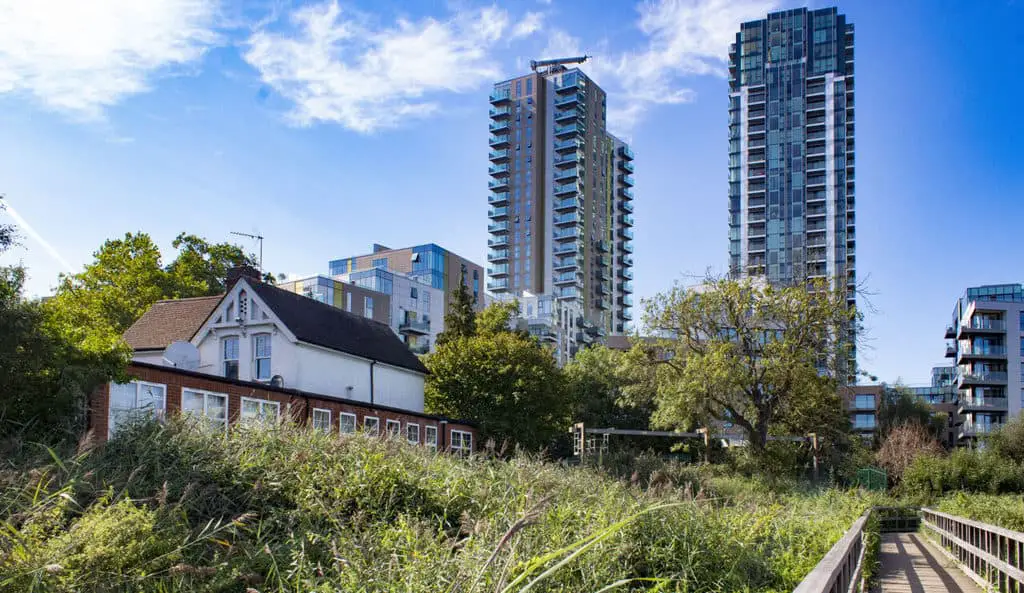
Photo by Oscar J Harper
How do You Correct Perspective Distortion With Post-Processing Software?
Shooting your photographs in RAW offers a great deal of latitude for post-processing including exposure and perspective correction. You can open the RAW photograph in Lightroom and Photoshop (Camera Raw) and they offer similar tools for perspective correction. Let’s have a look at Photoshop as most people are likely to have that.
When you first open the RAW file with Photoshop, it will open up in “Camera Raw” which is the software that sits between the RAW file and photoshop to carry out some initial processing of the data. While you are in “Camera Raw”, you will have a series of options for editing. Choose the “Optics” Menu. In here, Check (Tick) the “Use profile corrections” box. Now select the Make and Model of the lens that you used and the software will correct the optical distortion inherent in the lens design.
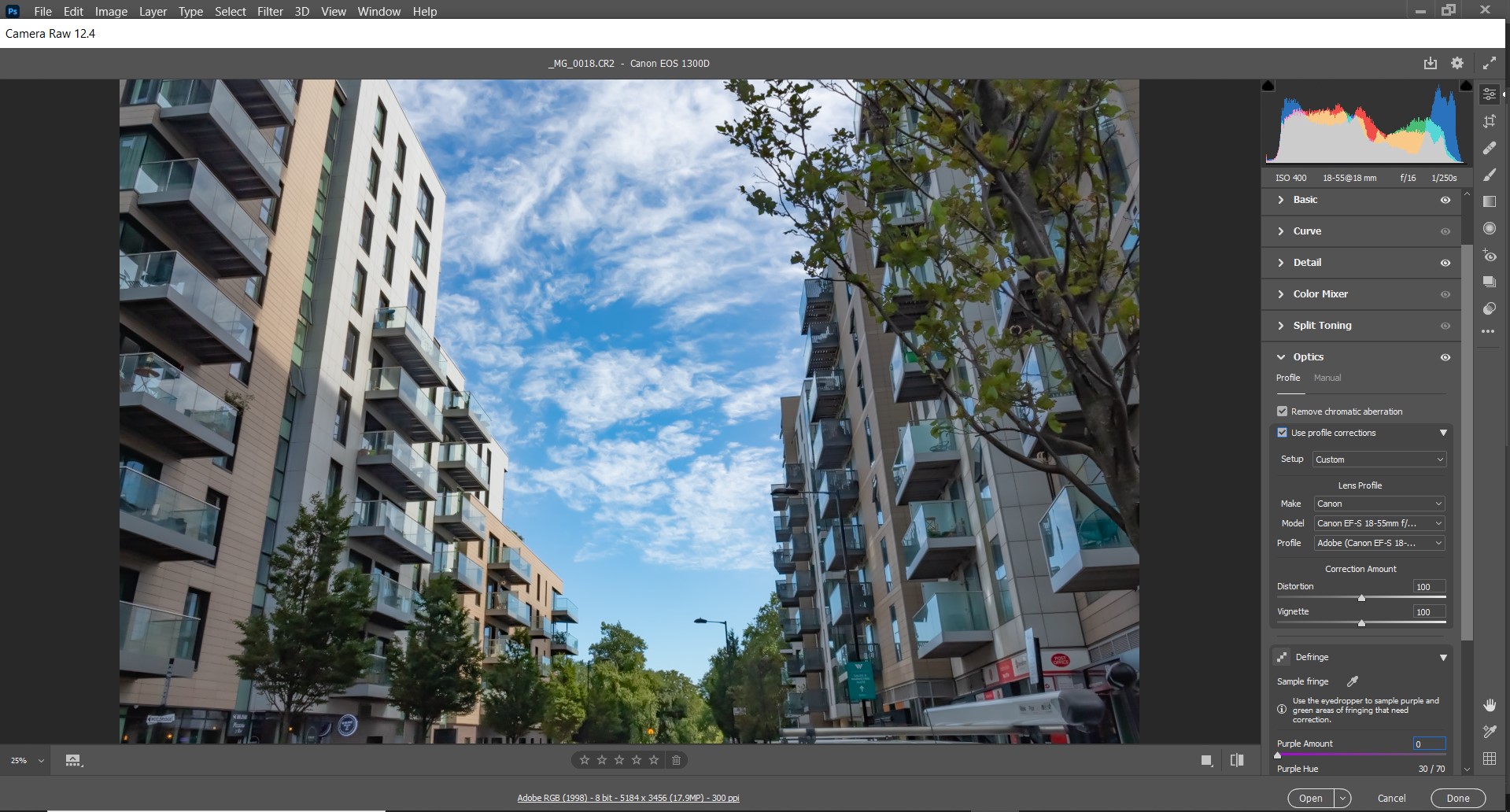
Now choose the “Geometry” menu. This tool has 4 upright correction tools: Auto, Level, Vertical and Full:
Try the “Auto” correct, it usually does a pretty good job of fixing the convergent perspective that is common in photos of tall buildings. The “Level” tool usually just corrects the horizontal lines. “Vertical” also does a good job of correcting the perspective. The “Full” button can do strange things if there are multiple angles in the image so probably avoid that one if it creates unpredictable results.
Once you’ve applied the “Auto”, “Vertical” or “Full” fixes to the image you may notice that the image has become a little stretched in one axis or another. You can manually fine-tune the aspect, scale, axes, rotation and offset to correct this. You may have to crop the image to tidy it up afterwards but the result will be a very convincing architectural photograph.
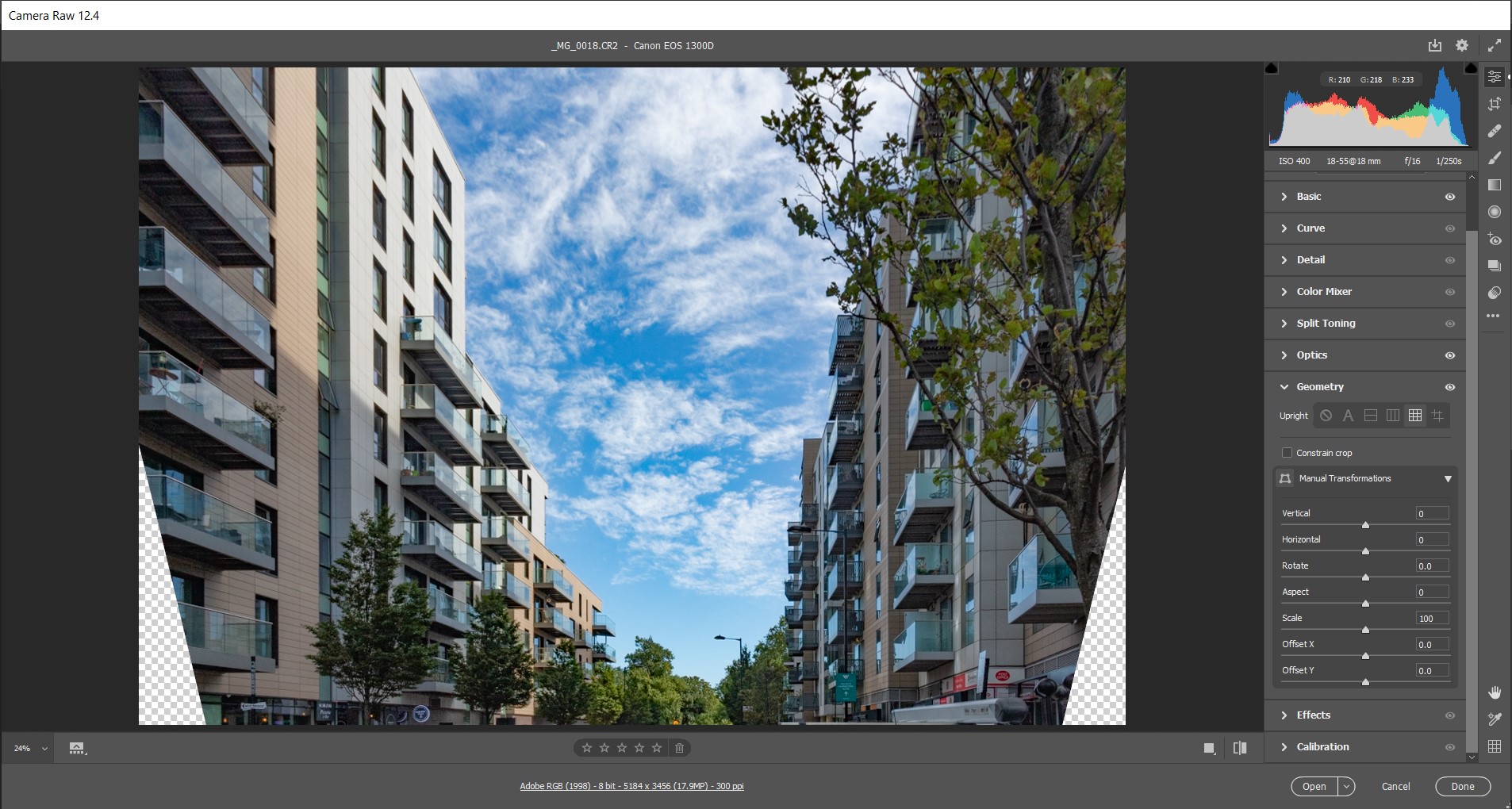
Over Correcting The Verticals
Sometimes, when you use software post-processing the result can look false and overcorrected especially if you choose the “Guided” option where you draw two lines over the intended verticals. This can happen when you have a picture of a building taken very close and looking up at it from a steep angle. When you correct the verticals, even if they are exactly correct, the building will look unnaturally stretched upwards and the upper section may look wider than the lower section.
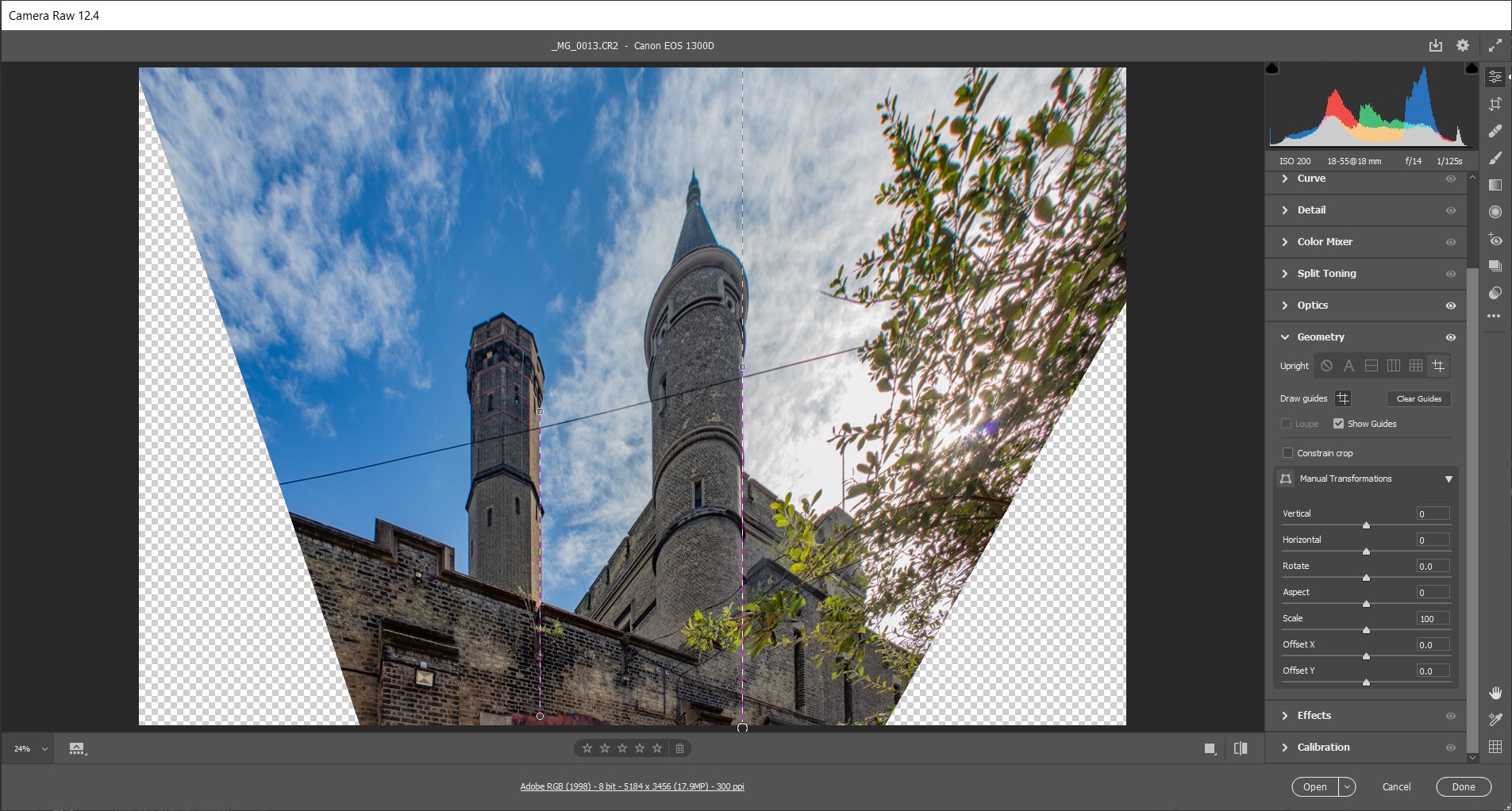
This is just an optical illusion as our brains expect to see a little perspective as we look up at a tall building. You can easily fix this by using the fine-tuning sliders or adjust the vertical guidelines to dial back the verticality of the building edges until it looks more natural.
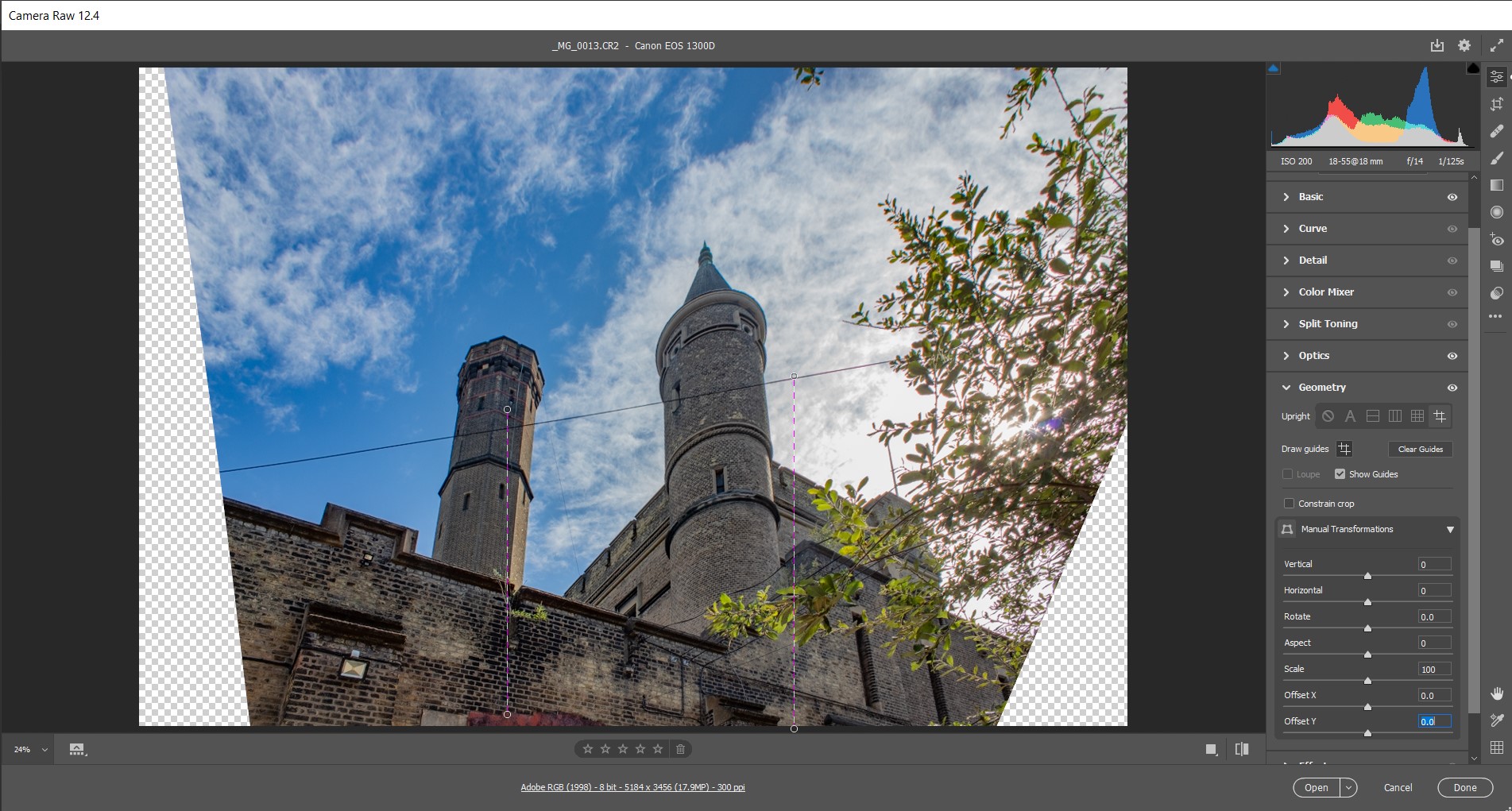
Related Questions
What is Composition in Photography and How to Perfect It?
Perspective or verticality (by correcting the perspective) can be a visual device that can be used in the composition of photographs to create more dynamic images. You can find out more by reading our illustrated guide by clicking here.

